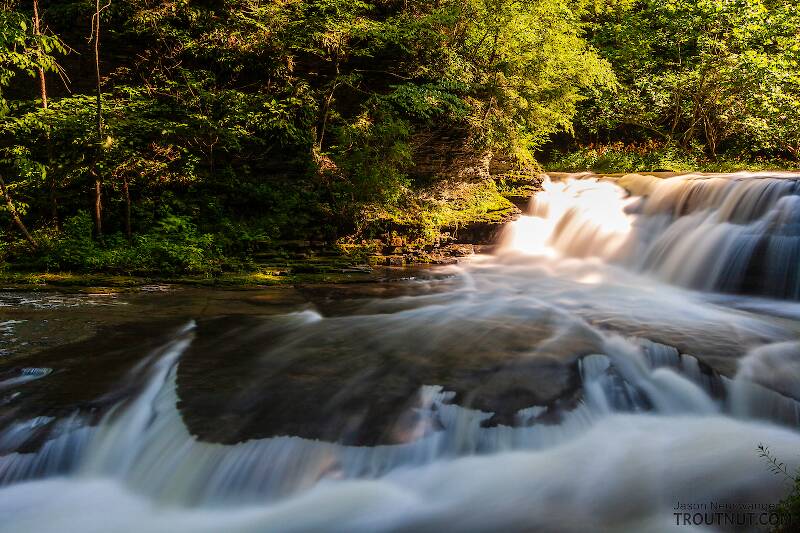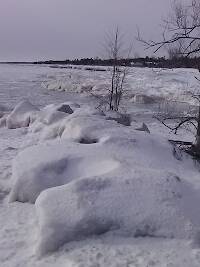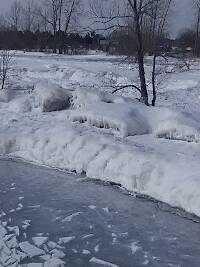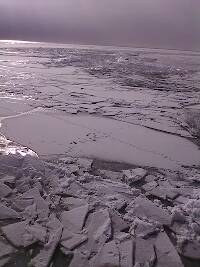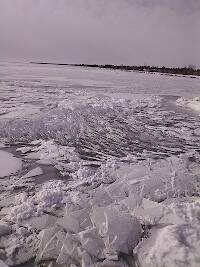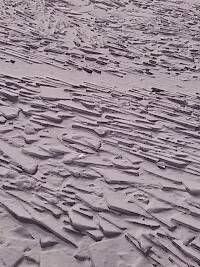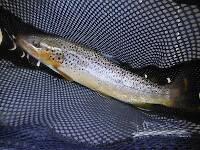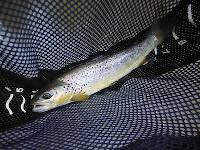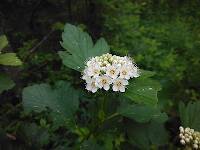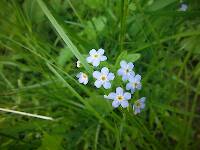
Salmonflies
Pteronarcys californica
The giant Salmonflies of the Western mountains are legendary for their proclivity to elicit consistent dry-fly action and ferocious strikes.
Featured on the forum

This specimen keys to the Epeorus albertae group of species. Of the five species in that group, the two known in Washington state are Epeorus albertae and Epeorus dulciana. Of the two, albertae has been collected in vastly more locations in Washington than dulciana, suggesting it is far more common. On that basis alone I'm tentatively putting this nymph in albertae, with the large caveat that there's no real information to rule out dulciana.

Troutnut is a project started in 2003 by salmonid ecologist Jason "Troutnut" Neuswanger to help anglers and
fly tyers unabashedly embrace the entomological side of the sport. Learn more about Troutnut or
support the project for an enhanced experience here.
Flyfishen24
Posts: 6
Posts: 6
Flyfishen24 on Dec 21, 2016December 21st, 2016, 12:38 am EST
Most trout books and Video's about catching trout talks about throwing a big immitation mouse fly on late days in spring ad summer to catch big browns. Has anyone had luck with these? Or is there a better fly to use late day that big browns might like?
Jmd123 on Dec 21, 2016December 21st, 2016, 3:11 am EST
Welcome Johnathan from Jonathon! Spence, a.k.a. Oldredbarn, posted a story on here about a year or so ago about floating a stretch of the Manistee (I think?) all night long with mouse patterns. They did catch some big browns! At that time of year though, you generally have some big mayfly hatches like Hexagenia, Brown Drakes, etc. that will bring fish up in the waning hours of daylight. A big attractor like an outsize Royal Wulff (size 6) will often bring up bigger fish at night as well.
Jonathon
Jonathon
No matter how big the one you just caught is, there's always a bigger one out there somewhere...
RleeP on Dec 21, 2016December 21st, 2016, 4:22 am EST
At the right times of year or of day (more often night, actually..), mouse patterns can be very effective for not only large trout, but also LMB, SMB and Pike, etc. We had good luck this past Summer in Quebec on moderate sized pike with a pattern called the Morrish Mouse. Here's a link to the pattern, although I cannot guarantee it will be "live" and clickable:
http://www.flyfisherman.com/fly-tying/step-by-step/fly-tying-the-morrish-mouse/
As a tier who leans towards simplicity, I like the Morris pattern because it works and is a relatively simple tie. This means I am less upset when I leave one in a tree or streamside bush.
Nobody has been able to ask the fish, so we cannot say for certain, but I've read that it is likely that trout actually see (and try to eat) more voles than mice. Voles are generally smaller than mice, so this argues for a somewhat smaller fly, say a #6 (I'm using the hook I usually tie them on, the old Mustad 37187 or "Stinger). This size will vary with other hook types/configurations. I know guys who tie their mice on 2/0 Mustad 3366's and even larger hooks.
Like Jonathon says, there are a lot of larger flies that will pull bigger trout up. Many of them have the advantage of being easier to cast as well as easier to tie than a mouse fly. Others like larger streamers and wooly buggers have the additional advantage of being effective at any time and not just primarily at night like a mouse fly. I think if you hang around this sport long enough, you'll see the popularity or faddishness of various types of flies come and go. I tend to think that we are currently in a mouse fad of sorts. This doesn't mean that they are not good or effective flies, just that like every other fad or "next big thing" from beadheads to hot spots to cdc emergers to whatever, they are another option as opposed to being the last word.
I guess the only other thing I'd mention is that like most big fly for big fish strategies, mouse fishing for trout is a closer cousin to deer hunting than rabbit hunting. There is less action, but what action you get is likely to be more memorable.
Tie or buy some mouse flies. At the right time and place, they can be a gas to fish for just about any fresh water game fish that is inclined to surface feed.
http://www.flyfisherman.com/fly-tying/step-by-step/fly-tying-the-morrish-mouse/
As a tier who leans towards simplicity, I like the Morris pattern because it works and is a relatively simple tie. This means I am less upset when I leave one in a tree or streamside bush.
Nobody has been able to ask the fish, so we cannot say for certain, but I've read that it is likely that trout actually see (and try to eat) more voles than mice. Voles are generally smaller than mice, so this argues for a somewhat smaller fly, say a #6 (I'm using the hook I usually tie them on, the old Mustad 37187 or "Stinger). This size will vary with other hook types/configurations. I know guys who tie their mice on 2/0 Mustad 3366's and even larger hooks.
Like Jonathon says, there are a lot of larger flies that will pull bigger trout up. Many of them have the advantage of being easier to cast as well as easier to tie than a mouse fly. Others like larger streamers and wooly buggers have the additional advantage of being effective at any time and not just primarily at night like a mouse fly. I think if you hang around this sport long enough, you'll see the popularity or faddishness of various types of flies come and go. I tend to think that we are currently in a mouse fad of sorts. This doesn't mean that they are not good or effective flies, just that like every other fad or "next big thing" from beadheads to hot spots to cdc emergers to whatever, they are another option as opposed to being the last word.
I guess the only other thing I'd mention is that like most big fly for big fish strategies, mouse fishing for trout is a closer cousin to deer hunting than rabbit hunting. There is less action, but what action you get is likely to be more memorable.
Tie or buy some mouse flies. At the right time and place, they can be a gas to fish for just about any fresh water game fish that is inclined to surface feed.
Quick Reply
Related Discussions
Topic
Replies
Last Reply
5
Jan 10, 2017
by Martinlf
by Martinlf

